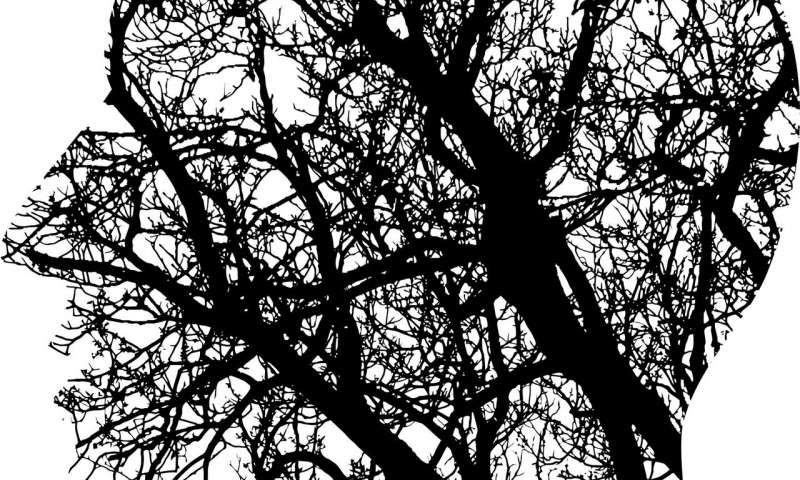by University of Barcelona
A group of life-threatening neurological conditions affecting children has been linked to an antibody that points to potential treatment, according to an observational multicenter study involving 535 children with central nervous system (CNS) demyelinating disorders and encephalitis, published in The Lancet Neurology journal.

The findings suggest that the myelin oligodendrocyte glycoprotein (MOG) antibody is associated with a wider range of life-threatening autoimmune conditions than previously thought, including neuromyelitis optica spectrum disorders and encephalitis, which cause severe neurological (brain and nervous system) symptoms such as vision loss, muscle weakness, and loss of coordination and speech.
Because this group of CNS disorders can mimic similar conditions like multiple sclerosis (MS), they are difficult to diagnose correctly. Until around 10 years ago, patients with these demyelinating diseases were considered to have atypical forms of MS, and the prognosis and best treatment options were unknown. Over the last 10 years, multiple studies have shown that several demyelinating diseases (including optic neuritis, myelitis, and acute disseminated encephalomyelitis [ADEM]) associate with the MOG-antibody biomarker, and patients affected by this group of diseases frequently improve with immunotherapy. However, the best treatment approach and long-term outcome remain unknown. Now, this new study suggests that testing for the biomarker could speed accurate diagnosis and help identify the appropriate treatment for some of these disorders.
In the study, 85% (99/116) children who tested positive for MOG antibodies and given appropriate treatment had complete or near complete recovery, but 15% (17) experienced moderate to severe disease-related deficits not caused by the treatment (eg, cognitive impairment, epilepsy, vision loss), and one died from their disease.
“The diagnosis of many of these patients especially those with encephalitis would have been missed if it were not for the prospective design our study,” says Dr. Thais Armangue from the Sant Joan de Deu Children’s Hospital, University of Barcelona, in Spain who co-led the research. “Identifying these patients is important because most of the children who tested positive for MOG antibodies responded to treatment with immunotherapy.”
Co-lead author Professor Josep Dalmau from the University of Barcelona explains, “Demyelinating diseases in children can be very difficult to distinguish because they present with similar symptoms and imaging features. Correct and early diagnosis allows for treatment with immunosuppressants, rather than the treatments specifically used in MS that are not effective in most of these diseases. Moreover, it is important to differentiate between those diseases that do not require chronic treatment and others in which prolonged immunotherapy is needed to improve long-term outcomes.”
MOG antibodies damage the protective covering (myelin sheath) that surrounds nerve fibers in the brain, optic nerves, and spinal cord, so messages cannot pass along these nerves effectively, causing symptoms such as vision loss, muscle weakness, and pain. Many children may only experience one MOG antibody disease event, and have no further symptoms. However, some children may be at risk of further relapses months, sometimes years, later.
Although there is increasing recognition of MOG-antibody associated syndromes in children, the full range of diseases associated with MOG antibodies remains unknown.
To provide more evidence, researchers conducted a prospective study of children (median age six years) with suspected demyelinating syndromes (239 children) and encephalitis other than ADEM (296) attending 40 hospitals across Spain between June 1, 2013, and December 31, 2018. Participants who tested positive for MOG antibodies were assessed for clinical features, response to treatment (ie, number of relapses), and outcomes over a median follow-up of 42 months.
In total, 116 (22%) of 535 children were found to be positive for MOG antibodies, including 94 (39%) with demyelinating syndromes and 22 (7%) with autoimmune encephalitis. Importantly, 24% (28/116) of these children had syndromes not previously associated with MOG antibodies.
Among the 64 patients with autoimmune encephalitis, MOG antibodies were the most frequent biomarkers—more common than all other neuronal antibodies combined (22 [34%] vs 21 [33%])—suggesting that MOG antibody testing should be conducted when diagnosing children with suspected encephalitis after excluding infectious causes, particularly as these patients often respond to treatment with immunotherapy.
The findings also suggest that younger children with MOG-antibody associated syndromes tend to present with clinical features of ADEM (which is an inflammatory condition that mainly affects the brain), whilst older children are more likely to have signs of optic neuritis (eg, loss of vision, pain in the eye) or myelitis (eg, back pain, weakness in both legs).
During follow-up, 33 (28%) of 116 patients positive for MOG antibody disease had relapses. Most of these patients (99/116, 85%) recovered well. However, 17 (15%) experienced disease-related moderate to severe deficits, and one died due to their disease.
“Despite advances in diagnostic testing for encephalitis, up to half of cases have no clear cause. Our findings reveal that the spectrum of MOG antibody disease is broader than previously thought and includes autoimmune encephalitis as well as multiple demyelinating syndromes,” says co-author Dr. Gemma Olive-Cirera from the Sant Joan de Deu Children’s Hospital, University of Barcelona, Spain. “In light of our findings, current classifications and terminology of MOG antibody-associated syndromes should be updated.”
The authors note several limitations, including that this was not a registry-based study, and therefore could not assess the incidence or prevalence of MOG antibody-associated syndromes, and that the follow-up was short, which could result in the frequency of relapses being underestimated.
Writing in a linked Comment, Dr. Romain Marignier from the Hôpital Neurologique Pierre Wertheimer, France (who was not involved in the study) describes the research as “a milestone in the understanding of MOG antibody-associated syndromes,” and writes: “In view of the very broad clinical spectrum now associated with MOG autoimmunity, the next challenge will be to identify the optimal therapeutic strategy for each clinical presentation. This objective is closely connected to a better understanding of the pathogenic role of MOG antibodies, and the need for early, robust, and specific prognostic factors of relapse and disability.”

Leave a Reply